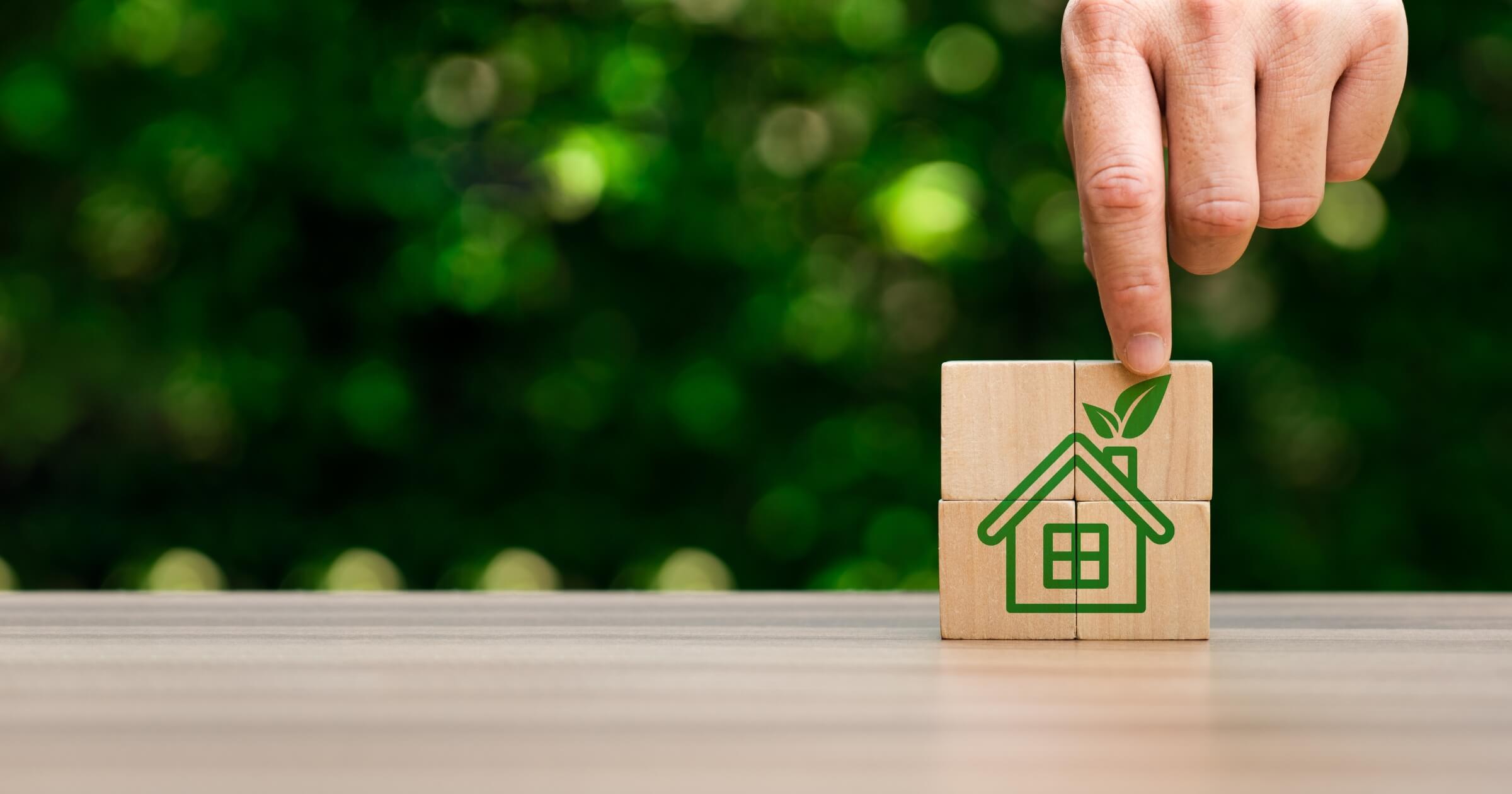Those in the market to build, buy, or remodel are looking for innovative features that save the planet and reduce their energy bills. In 2025, this could manifest in various ways. New housing designs are more commonly integrating luxury eco-friendly features like green roofs, solar panels, and smart home technology. Homes like the MO House, Living Screen House, and Slip House have incorporated design elements like these to create a more sustainable future. Here’s the full list of the most sustainable homes and what you can do to make yours a little greener.
Top 9 luxury eco-friendly homes in the world
9. Fall House – Big Sur
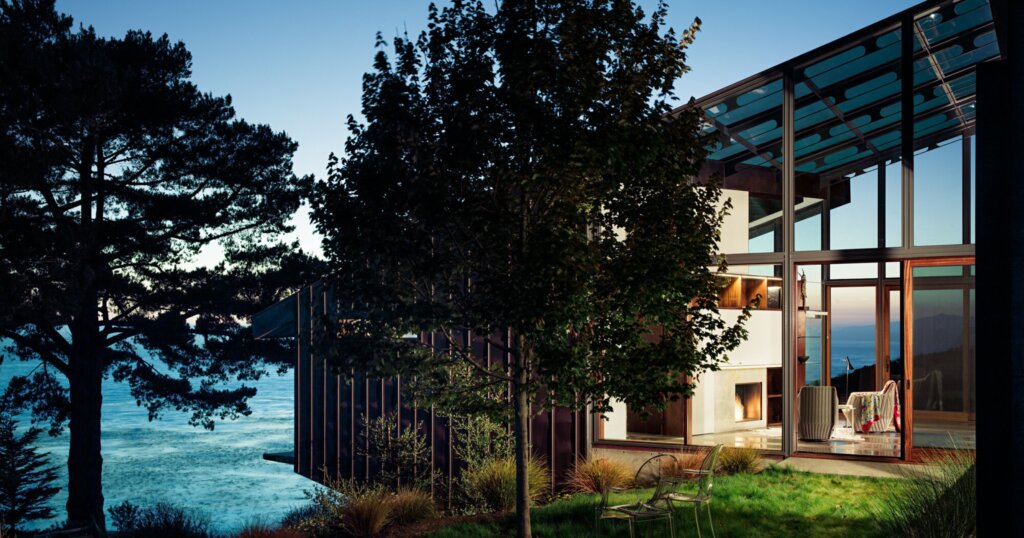
Image sourced from https://www.fougeron.com/
Cost: $25 million
Square footage: 3,800 square feet
Top eco-friendly features:
- Heat-gain reducing glass
- Hydronic heating
- Stack ventilation layout
Settled in the heart of Big Sur, California, the Fall House is a large, three-bedroom home artfully embedded near the shoreline of the southern coast. It boasts high-performance, heat-gain-reducing glass with maximized views of the ocean, as well as a hydronic heat system to maintain warmth and comfort throughout the interior.
Fall House features a stack ventilation layout, which is another sustainable approach to promoting passive ventilation through air temperature differences. The natural daylight extends even to the bathrooms thanks to the floor-to-ceiling glass stretching across most of the building’s facade.
8. OUTrial House – Książenice
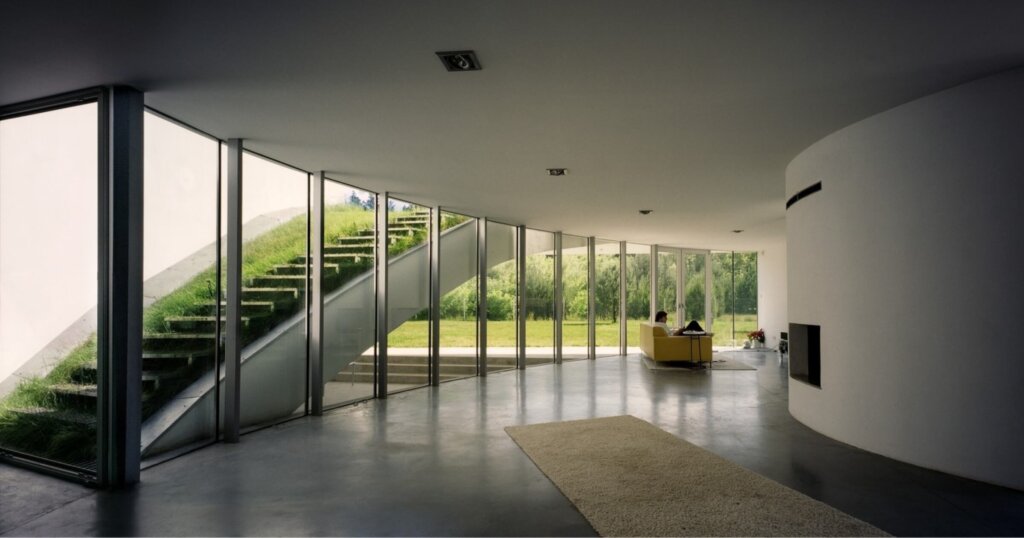
Image sourced from KWKpromes.pl
Cost: Unlisted
Square footage: 15,500 square feet
Top eco-friendly features:
- Green roof
- Embedded into the ground for natural insulation
- Glass panels facilitate natural heating/cooling
OUTrial House is a luxury, eco-friendly giant in Książenice, Poland. It’s built into the grass-covered area, with the ground partially raised, acting as a natural sloping green roof. This added natural insulation helps keep the home warm and comfortable all year, and the floor-to-ceiling glass exterior of the ground floor lets in light for stunning views and natural temperature control.
OUTrial was made to mimic a modern home/atrium hybrid, with sloping grass staircases and almost complete integration with nature. It’s a unique design, especially for the area, but it has piqued the interest of Polish contractors and homeowners near and far.
7. Slip House – London
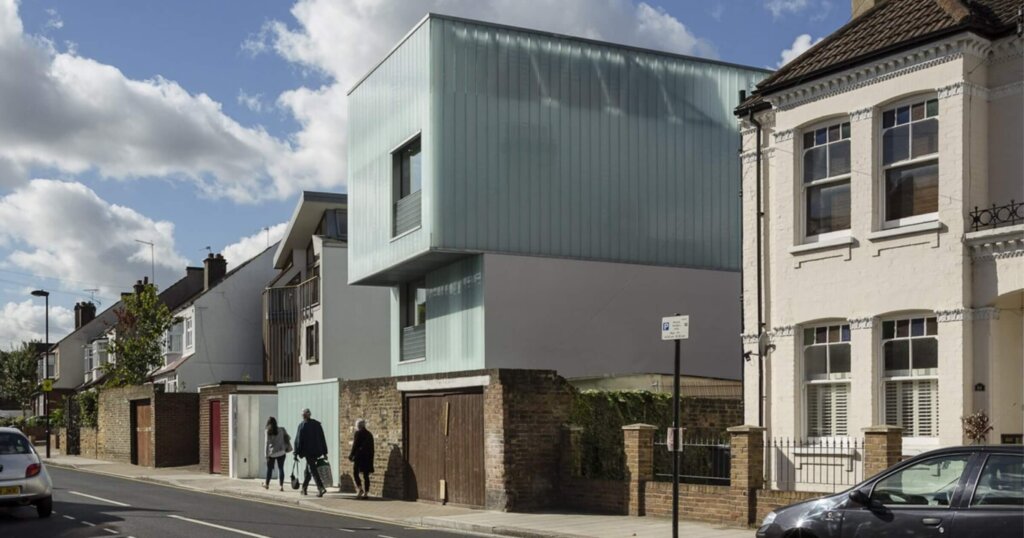
Image sourced from Turner.works
Cost: $2,160,268
Square footage: 2,150 square feet
Top eco-friendly features:
- Glass planks for energy-efficient heating and cooling
- Solar-assisted heat pump
- Rainwater harvesting
South London’s Brixton area is home to the Slip House, a 2,150-square-foot home consisting of three offset stacked boxes. The exterior of each box is composed of translucent glass planks, and a solar heat pump is also utilized for backup temperature control during London’s moody seasons.
The Slip House also utilizes rainwater harvesting, meaning rainwater caught is stored, cleaned, and made available for drinking, cooking, or bathing.
6. Đại Kim House – Hanoi
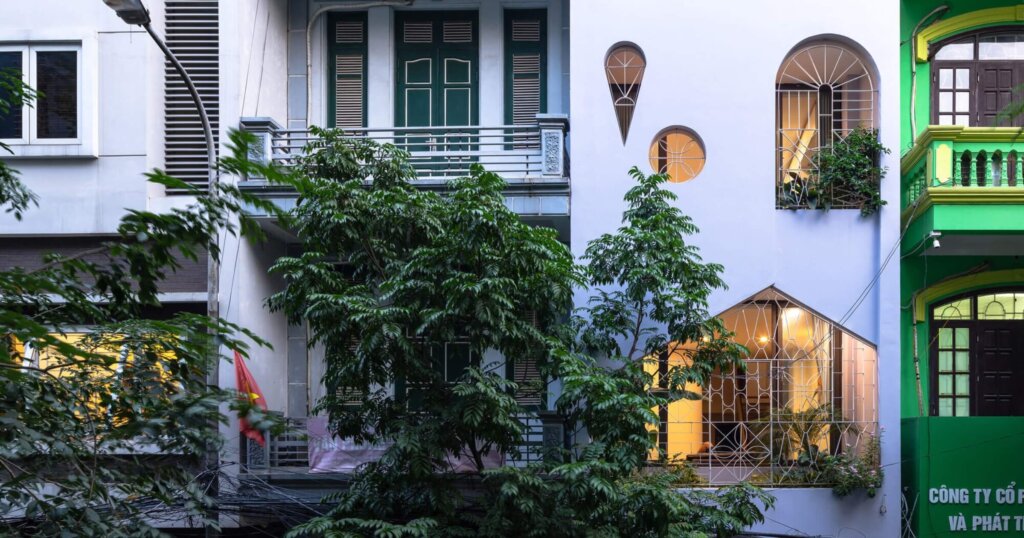
Image sourced from humblehome.com
Cost: Unlisted
Square footage: 603 square feet
Top eco-friendly features:
- Trees throughout the home boost indoor air quality
- Temperature-balanced, bright, and shadowy rooms
- Design made to encourage wind/cross-breezes
The eco-friendly features of the Đại Kim House don’t stem from sustainable tech but from nature. There are trees weaving through the architecture to improve the indoor air quality, and the layout encourages a natural cross breeze through the open windows. The rooms are also artfully balanced between bright and shadowy to maintain home comfort.
Nature was a heavy influence throughout the interior design process, and the sustainability perks added to the desirability, encouraging other Vietnamese builders to follow suit.
5. Syshaus Residence – São Paulo
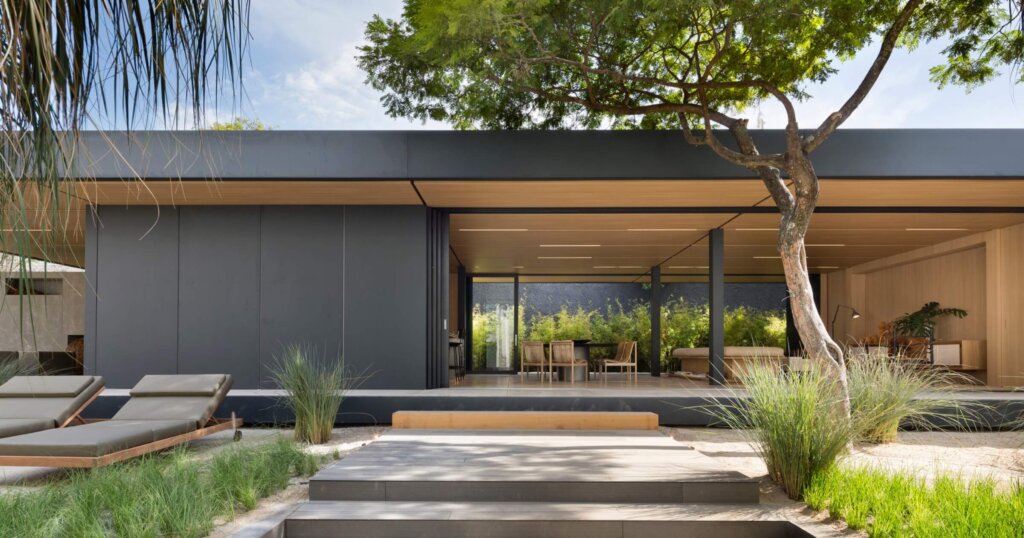
Image sourced from ArchDaily.com
Cost: $300 per square foot
Square footage: 2,200 square feet
Top eco-friendly features:
- Recyclable components
- Solar panels
- Rainwater capture and reuse
Syshaus in São Paulo, Brazil, was a project designed to blend high technical quality, aesthetics, and eco-consciousness. To achieve success in all three areas, the home combined modular components for effective and customizable construction, as well as solar panels and rain harvesting for energy efficiency. Plus, the home’s natural light and open-concept design make it truly stunning.
Future construction companies looking to employ eco-friendly design, like Syshaus, can do so in various configurations. With a three-story limit and build capacities on sloped or flat terrain, it’s a sustainable and replicable option for São Paulo residents of the future.
4. MO House – Madrid
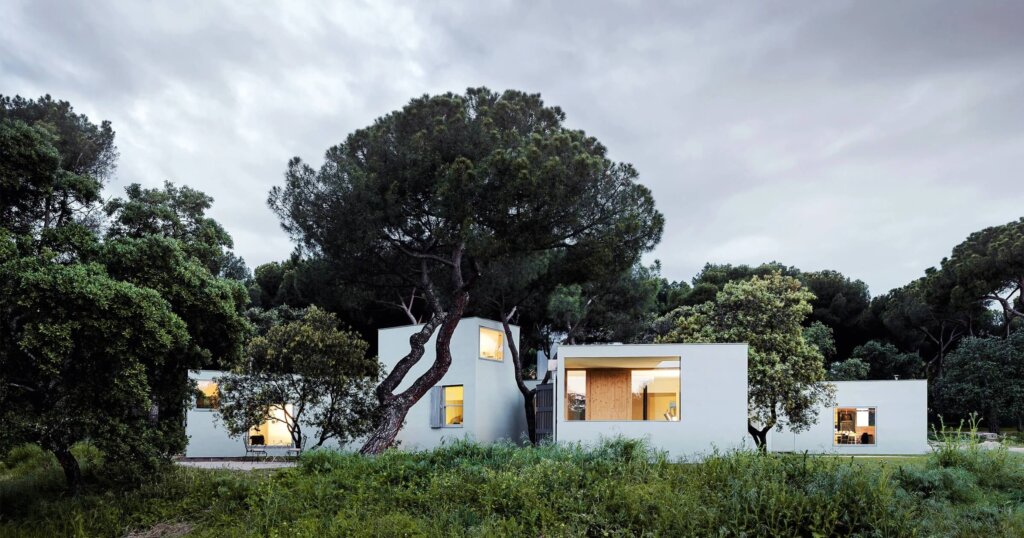
Image sourced from arquitecturaviva.com
Cost: Unlisted
Square footage: 3,229 square feet
Top eco-friendly features:
- Cross-laminated wood panels
- Prefabricated design
- Integration with nature to promote indoor air quality
For nature lovers out there, MO House is situated right in the forest just outside Madrid, Spain. The inspiration for the design was to blend in with nature, and the cross-laminated wood paneling effectively achieves that vision. This house is also prefabricated, meaning the construction was far more waste-conscious than the typical build. It also provides effective thermal insulation throughout the home.
3. Casa Nirau – Mexico City
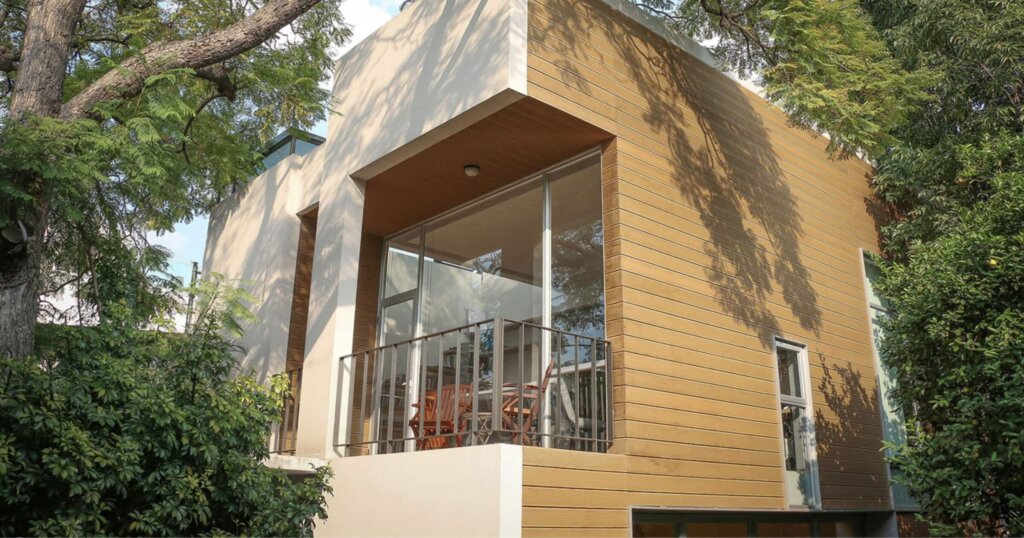
Image sourced from paulcremoux.com/
Cost: Unlisted
Square footage: 1,937 square feet
Top eco-friendly features:
- Rainwater harvesting system
- Passive heating and cooling
- Open living area to promote natural temperature control
Mexico City’s Casa Nirau is a downsized version of the home that originally occupied the lot. To reduce the home’s footprint, the recent owners decided to shrink the square footage and give the house an eco-friendly luxury makeover. Casa Nirau features an open-concept design with ample airflow to facilitate natural heating and cooling, as well as a robust rainwater harvesting system that converts rainfall into potable water.
It also features a central courtyard that aids in natural cooling and promotes integration with nature. It’s a truly unique oasis in the middle of a bustling city.
2. ZEB Pilot House – Larvik

Cost: Unlisted
Square footage: 2,368 square feet
Top eco-friendly features:
- Solar panels
- Underground energy wells
- Glass panels for passive heating and cooling
Larvik’s Zeb Pilot House has one of the most distinct designs in Norway. It has a unique slope toward the southeast, with solar panels covering the roof. It also features underground energy wells to supplement any additional energy the home may need. Glass panels are strategically placed to allow for passive heating and cooling, and even the natural indoor finishes promote better indoor air quality.
1. Edgeland House – Austin
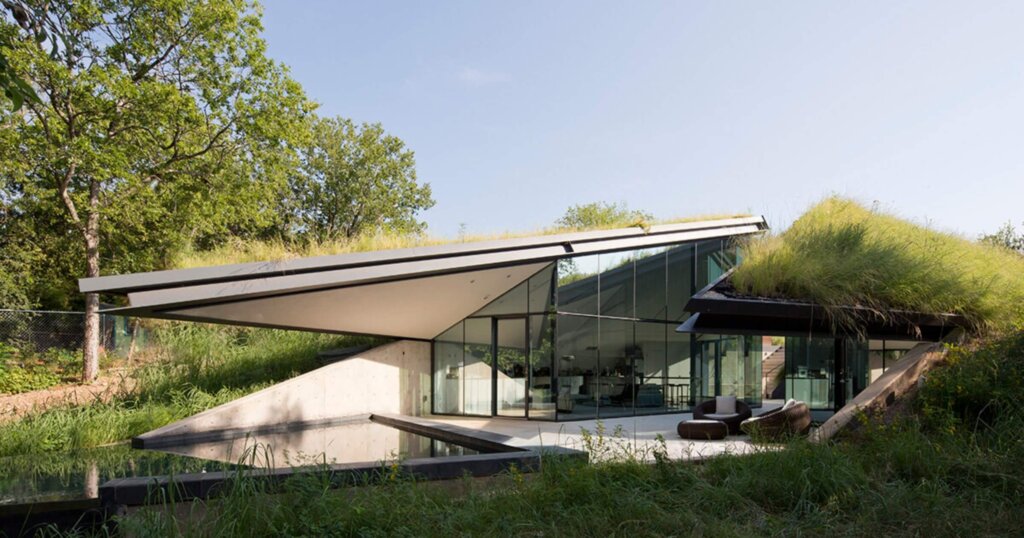
Image sourced from https://www.bcarc.com/
Cost: $32.5 million
Square footage: 1,400 square feet
Top eco-friendly features:
- Green roofs
- Airflow-optimized courtyard
- Backup hydronic heating system
Edgeland House in Austin, Texas, is comprised of two green-roofed units that insulate the home and shade each other from the harsh Texas sunlight. Between the two wings stretches a long courtyard, facilitating natural airflow and keeping both areas cool. Designed to have a minimal impact on the reclaimed brownfield site, Edgeland was created to heal and restore the local wildlife with stunning yet subtle functionality.
Top eco-friendly home design features to consider
There are many eco-friendly luxury home design features that designers and architects employ when sustainability is a top priority. Most buildings don’t utilize all eco-friendly features but instead use a mixed bag most conducive to the area and its resources. Features may include:
- Smart home technology: Smart thermostats, appliances, and other lighting systems ensure you’re only using energy when absolutely necessary.
- Rainwater harvesting: Recycling rainwater and using it as drinking, cooking, or bathing water makes for greener hydro use.
- Energy-efficient glass: Double- or triple-pane windows prevent heat loss or gain, so your energy systems don’t need to work as hard and damage the environment.
- Non-toxic finishes: Low-VOC paints or adhesives improve indoor air quality by lessening exposure to harmful chemicals.
- Renewable energy: Sources, such as wind turbines and solar panels, help lower your home’s carbon footprint through eco-friendly power generation.
- Green walls or roofs: Vegetation on your home’s roof or walls provides natural insulation, reduces rain runoff, and boosts indoor air quality.
Final thoughts
Wanting a more sustainable home doesn’t have to be the impossible feat you may perceive it to be. Luxury homes like Slip House, MO House, Casa Nirau, and Edgeland don’t employ every eco-friendly feature in the book, but they do utilize solar paneling, rainwater harvesting, and natural means of supporting airflow and heat transfer.
You can start small with smart home technology or a few solar panels, and when you’re in the market to buy, you just might find that more sustainable home design features are more commonplace.
Love all things sustainability in AEC? Subscribe to the newsletter and follow us on LinkedIn to never miss a post!
